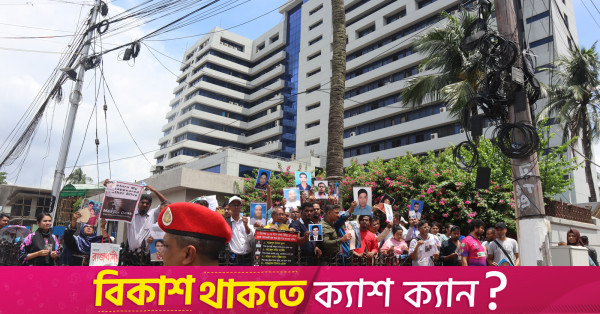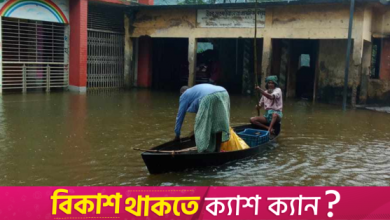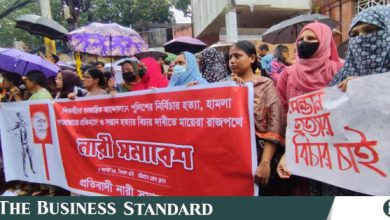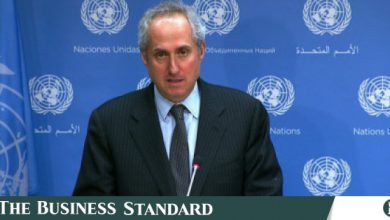‘Where is my son?’ Families seeking missing loved ones return empty-handed, again


Families of victims of enforced disappearance gathered in front of the DGFI headquarters today
Families of enforced disappearance victims in front of DGFI headquarter on August 7. Photo: Masum Billah
“>
Families of enforced disappearance victims in front of DGFI headquarter on August 7. Photo: Masum Billah
Moyuri Begum is the mother of Nizamuddin Munna. It has been over a decade since her son became a victim of enforced disappearance.
Since losing her son, she has also lost her husband too. She visits any door, any place where she might get information about her son, but she remains in the dark.
She mentioned this repeatedly to anyone who would listen to her story.
“My Munna was picked up by the DB (Detective Branch) on 6 December 2013 at 10pm. He was with his father when they picked him up in a white car. His father died of a heart attack three years later. I have been searching for my son for 11 years,” an elderly Moyuri Begum cried.
Today, a few dozen family members of victims of enforced disappearance gathered in front of the Director General of Forces Intelligence (DGFI) headquarters. Earlier, on Tuesday, the DGFI Director of Administration said they would provide an update on the people in secret captivity, known as “Aynaghor,” today.
But in a meeting with a delegation that included Mayer Daak cofounder Sanjida Islam Tulee, Odhikar’s Adilur Rahman Khan, and academic CR Abrar, the DGFI said there are no detainees in their Dhaka facility at the moment.
TBS asked Adilur Rahman after the meeting if any victims had been released today.
“We haven’t heard anything like that yet. They haven’t released anyone from here, and the official statement is that there are no detainees here,” Adilur said.
“They even said they will show us the ‘Aynaghor’ if necessary,” he added.
“If the missing family members are not found, we will form a human chain in front of Jahangir Gate in the future as well,” he added.
On Tuesday, two victims of enforced disappearance were reportedly released including former army Brigadier General Abdullahil Aman Azmi, son of the recently banned Jamaat-e-Islami’s former leader Ghulam Azam, and Mir Ahmad Bin Quasem, the younger son of executed Jamaat leader Mir Quasem Ali.
However, CR Abrar expressed concern about whether Azmi had returned home at all. “We want everyone’s safe return,” the academic said.
Adilur Rahman Khan said, “We will seek an appointment of the army chief, where we will present our stand on the disappearance.”
After the delegation came out with the news that the DGFI claimed there were no detainees, Selina Aktar was visibly upset. When she heard that families of victims of enforced disappearance would be gathering there, she rushed to join them.
“My husband was taken from Kachukhet Bazar in 2009. He was ill and had come to see a doctor when he was taken. I have been searching for him ever since. I have looked for him everywhere – at RAB, DB, and police,” Selina said.
“My child, who was 3.5 years old at the time, is now a university student. No matter what, I want my husband back,” she added.
Bishmoy Dutta Babu joined the group in front of the DGFI headquarters from Chattogram.
He was holding a photo of Nazrul Islam Bacha, former UP chairman from Chattogram, who has been missing since 2010.
“Bacha was a good man. He was elected chairman three times. We have come here from his village because we want Bacha back,” Bishmoy said.
Among the crowd that formed a human chain led by Mayer Daak after the meeting with the DGFI was Kawsar. He was holding a photo of his brother Torikul Islam Jhontu, a former Chatro Dol leader of the Tejgaon unit.
“We have been searching for him everywhere. We have no clue about his whereabouts. Today, Bangladesh has become independent for the second time. My request to those in charge, on this auspicious occasion, is that our 11-year wait should end today, and we want to see Jhontu again,” Kawsar said.




